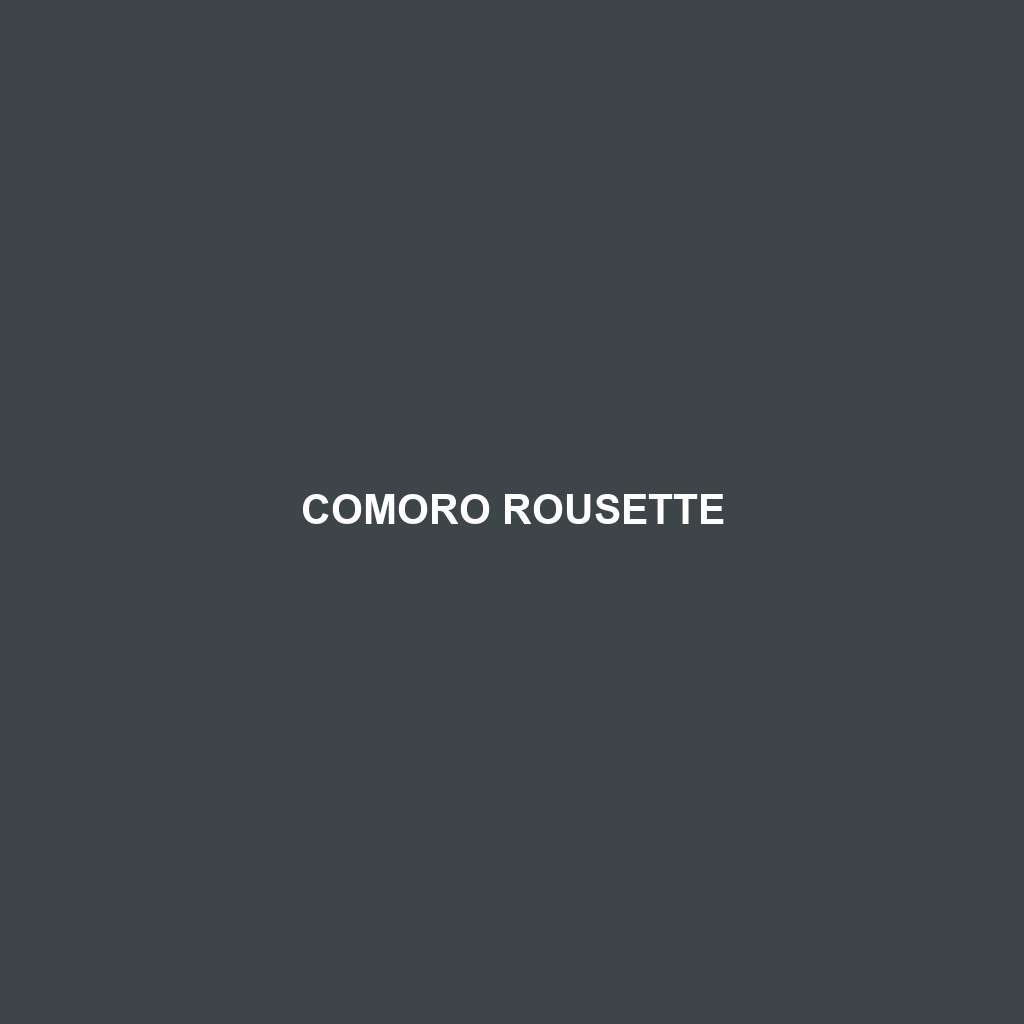Comoro Rousette: A Unique Fruit Bat of the Comoros
Common Name: Comoro Rousette
Scientific Name: Rousettus obliviosus
Habitat
The Comoro Rousette is primarily found in the Comoros Archipelago, located in the Indian Ocean, off the eastern coast of Africa. These fruit bats prefer tropical and subtropical forests, often residing in humid areas with dense foliage. They are typically seen in lowland rainforests, as well as mangroves and agricultural areas, where they can find abundant food sources.
Physical Characteristics
This medium-sized bat exhibits a wingspan of approximately 1 meter (3.3 feet). The Comoro Rousette is characterized by its rich brown fur with lighter underbellies, distinctive large eyes, and a unique nose structure that aids in echolocation. Their strong, elongated wings allow them to navigate through their forested habitats with agility, making them adept flyers.
Behavior
The Comoro Rousette is primarily nocturnal, emerging at dusk to feed and socialize. These bats are known for their social structures, often forming large colonies that roost in caves or tree hollows. They communicate through a range of vocalizations, which are integral to maintaining their social bonds. Their foraging behavior involves flying long distances to locate ripe fruits, which is particularly fascinating to bat enthusiasts.
Diet
The diet of the Comoro Rousette predominantly consists of a variety of fruits, including bananas, figs, and other tropical fruits. Their feeding habits play a crucial role in seed dispersal, as they consume fruits and excrete the seeds in different locations, promoting forest regeneration. This frugivorous diet is essential for the ecosystem they inhabit.
Reproduction
Comoro Rousettes are known to breed seasonally, with mating typically occurring during the warmer months. Female bats usually give birth to a single pup, which is dependent on the mother for nourishment and protection during its early weeks. Notable behaviors during the breeding season include increased vocal communication and communal roosting, which enhances the survival of the young.
Conservation Status
The Comoro Rousette is currently listed as Endangered on the IUCN Red List. Its populations are threatened by habitat loss due to deforestation, agricultural expansion, and hunting pressures. Conservation measures are critical to ensure the survival of this unique bat species.
Interesting Facts
The Comoro Rousette is not just a fruit bat; it is an essential pollinator in its environment. Its role in the ecosystem extends beyond seed dispersal, as it helps in the pollination of several fruit-bearing plants crucial for the local biodiversity. Additionally, these bats can live up to 15 years in the wild.
Role in Ecosystem
As a frugivore and pollinator, the Comoro Rousette plays a vital role in maintaining the health of its ecosystem. By dispersing seeds and pollinating plants, these bats contribute to the sustainability of forest habitats. Their presence supports the ecological balance, allowing various plant species to thrive, which in turn supports other wildlife.
